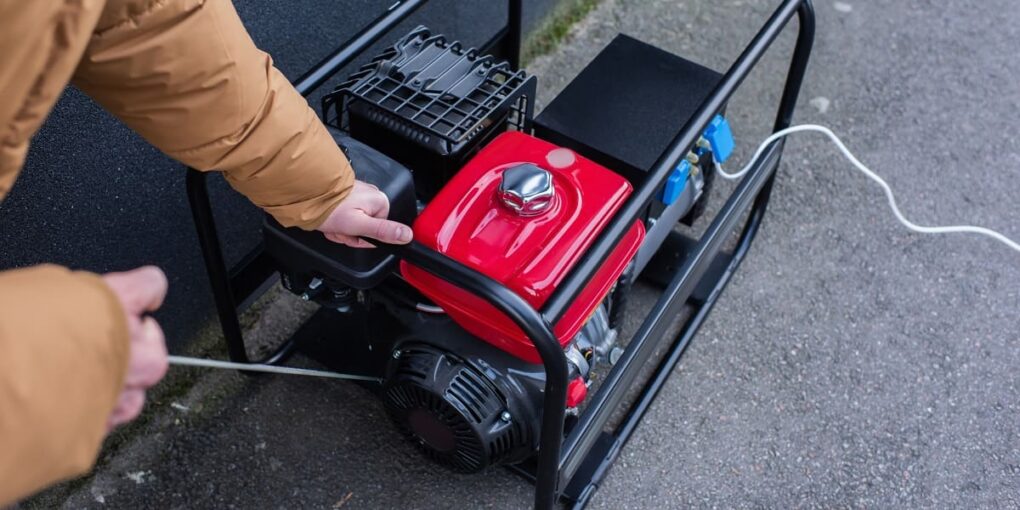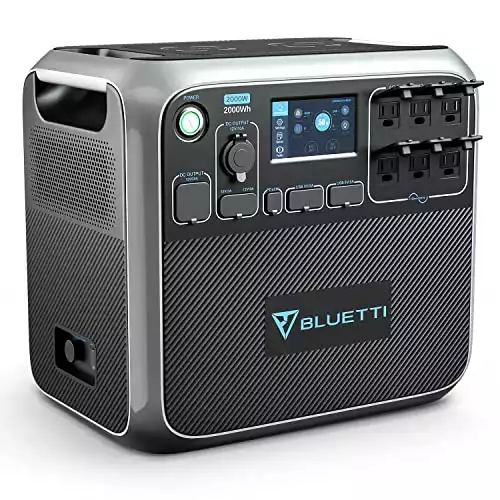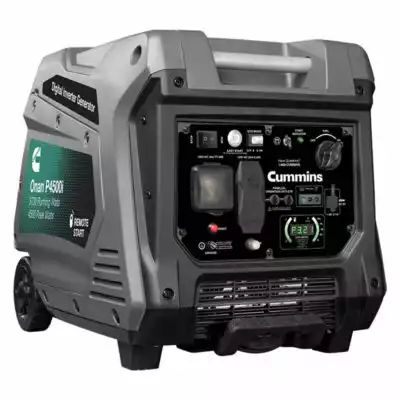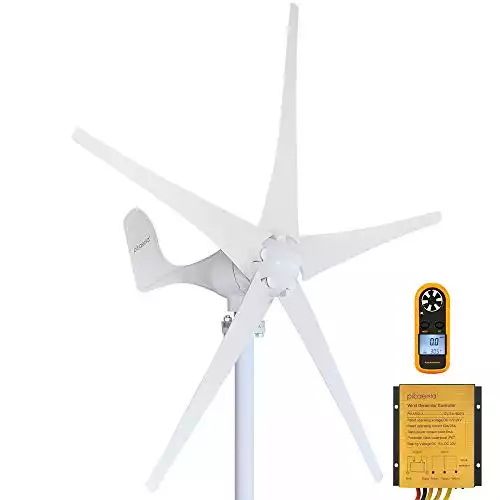
Many people dislike gasoline and diesel generators since they’re loud, produce an abundance of air pollution, and have a continuous cost on fuel, which is generally in short supply when you need it most.
As the demand for backup and off-grid source of power continues to increase, so does the look for house generator options.
Whether you’re looking for something quieter or simply something a bit more favorable to your living scenarios, here are 8 generator options that do not need gas or diesel to run.
1. Solar Generators
Solar generators have become quite popular over the last years and are the most popular alternative to gas and diesel generators. They offer a variety of advantages over gasoline and diesel, but they likewise have a higher initial price point. Whether you’re thinking inregards to a backup power supply or a power source for
your whole off-grid cabin, you’ll require to weigh your expenses carefully. While the preliminary cost for solar is much greater due to costly but required solar panels, once you have actually recuperated that, you have complimentary power for the lifespan of the generator.
Going solar also suggests no fuel storage or contamination. However totally free power isn’t the only perk of solar generators. They’re likewise 100% noise-free and require little upkeep.
Sadly, solar generators do not have dependable performance throughout cloud cover and winter months, so if you’re not in an area with sufficient constant sunshine, you may need an extra backup generator.
2. Inverter Generators (Portable Power Station)
Many individuals use the terms solar generator and inverter generator interchangeably, but there are subtle differences between the two. To clarify, an inverter is a large battery that stores power for later usage.
They are typically charged via wall outlets( when power is offered ), automobile batteries, and even solar panels. An inverter generator is best for your electronic gadgets due to the fact that it creates a more consistent power wave, decreasing the danger of power surges. Sadly, they are traditionally more pricey than standard gas and diesel generators.
Additionally, inverter generators have lower output options that restrict their capacity to power whole homes for extended time periods.
3. Wind Generators
require extra equipment, such as batteries and charge controllers. Some are only effective enough for a few devices, while others are effective adequate to provide your whole home. If you’re looking for more than simply a backup power supply, then guidance from a certified renewable energy professional is advised.
Portable wind turbines make great backup choices throughout emergency situations. These simple devices are commonly utilized while camping or visiting your off-grid cabin for the weekend.
Unfortunately, wind energy is incredibly periodic and undependable since it is totally based on the weather condition. Additionally, storing wind energy is both difficult and costly.
4. Biodiesel Generators
Mainly considered as a solution to greenhouse gas emissions, biodiesel generators are becoming more and more popular. Biofuel is originated from animal fats, recycled dining establishment grease, and veggie oils and is thought about safe and naturally degradable.
Biodiesel is more economical and eco-friendly when compared to more popular gas and diesel generators. Sadly, most of biodiesel fuels are made by yard makers, so this fuel supply is not easily offered at your regional gas station.
Biodiesel generators use an electric generator integrated with a diesel motor to generate electrical power. As such, you can utilize biodiesel fuel to run your diesel generator.
In fact, there’s not much benefit to biodiesel generators aside from the truth that they are eco-friendly.
Not just is biodiesel fuel more difficult to come by, however it likewise needs mass storage, which is one of the primary failures of standard gas and diesel generators. Additionally, due to the fact that biodiesel is a natural solvent, it is notorious for blocking fuel filters and degrading pipes, gaskets, and seals.
Biodiesel is likewise hygroscopic, which can add to the overall deterioration of your fuel system.
5. Water Generators (Hydro-Generator)
For larger-scale operations capable of powering entire houses, hydro-generators are the perfect choice for the off-grid homestead that has access to a naturally flowing water source. Hydro-generators require more of a DIY method, and there are a range of builds to pick from.
If you have the ideal capability and the ideal parts, you can attain 100% totally free energy with a hydro-generator.
Additionally, small commercially offered hydro-generators are in some cases utilized for emergencies, little off-grid cabins, or perhaps outdoor adventures like camping and hiking.
The WaterLily Turbine, for instance, produces both water and wind power for your favorite gadgets. These smaller devices usually offer in the area of 5 volts/15 watts of power.
Some hydro-generators can link straight to your water faucet, suggesting you can generate percentages of power as long as you can keep running water during a power outage.
Sadly, these smaller sized gadgets do not have adequate power for your entire house and are best booked for powering your preferred electronic gadgets or a couple of lights.
6. Manual Generators
Individuals utilize a variety of manual generators for emergency situations, but the most common commercially offered ones are hand-crank generators. These light-weight, simple-to-operate generators typically power small gadgets around 150 watts or less.
There are likewise numerous DIY variations varying in size and intricacy. This bicycle generator, for example, can powering small electronic gadgets and kitchen area home appliances.
Of course, it comes at the
cost of physical labor. 7. Magnetic Generators Magnetic generators create electrical energy through electromagnetism by creating a flow of electrons through copper wires.
You don’t see too many magnetic generators offered for business purchases, although they do exist. However, you’ll see lots of diy designs drifting around the internet.
These do it yourself designs are normally enough to light a few bulbs, but you’ll be hard-pressed to create a lot more power than that. Furthermore, you can not control the output voltage of these basic magnetic gadgets.
On the bright side, at least, you’ll never ever be left in the dark.
8. Coal Generator If you’re actually into the DIY scene, this unusual coal generator offers a special generator alternative. Many self-reliant people have actually improved upon these basic building strategies, originally released by FEMA, to offset some of the known problems arising from coal generators, like bio-crude.
Also referred to as wood gasifiers, these machines are difficult to develop and require a particular degree of store abilities, particularly welding.
These coal generators have to do with as loud as gas and diesel generators, so they are not perfect if you’re trying to find something peaceful. On the other hand, they’re the perfect complimentary source of power if you have an abundance of trees on your home.
Even better, they’re eco-friendly given that wood gasifiers make use of a renewable resource and burn wood without increasing the carbon in the environment.





